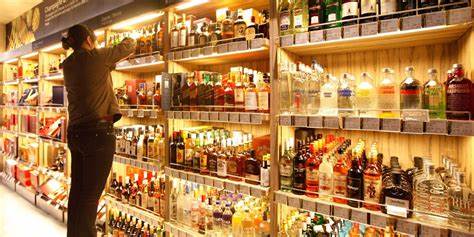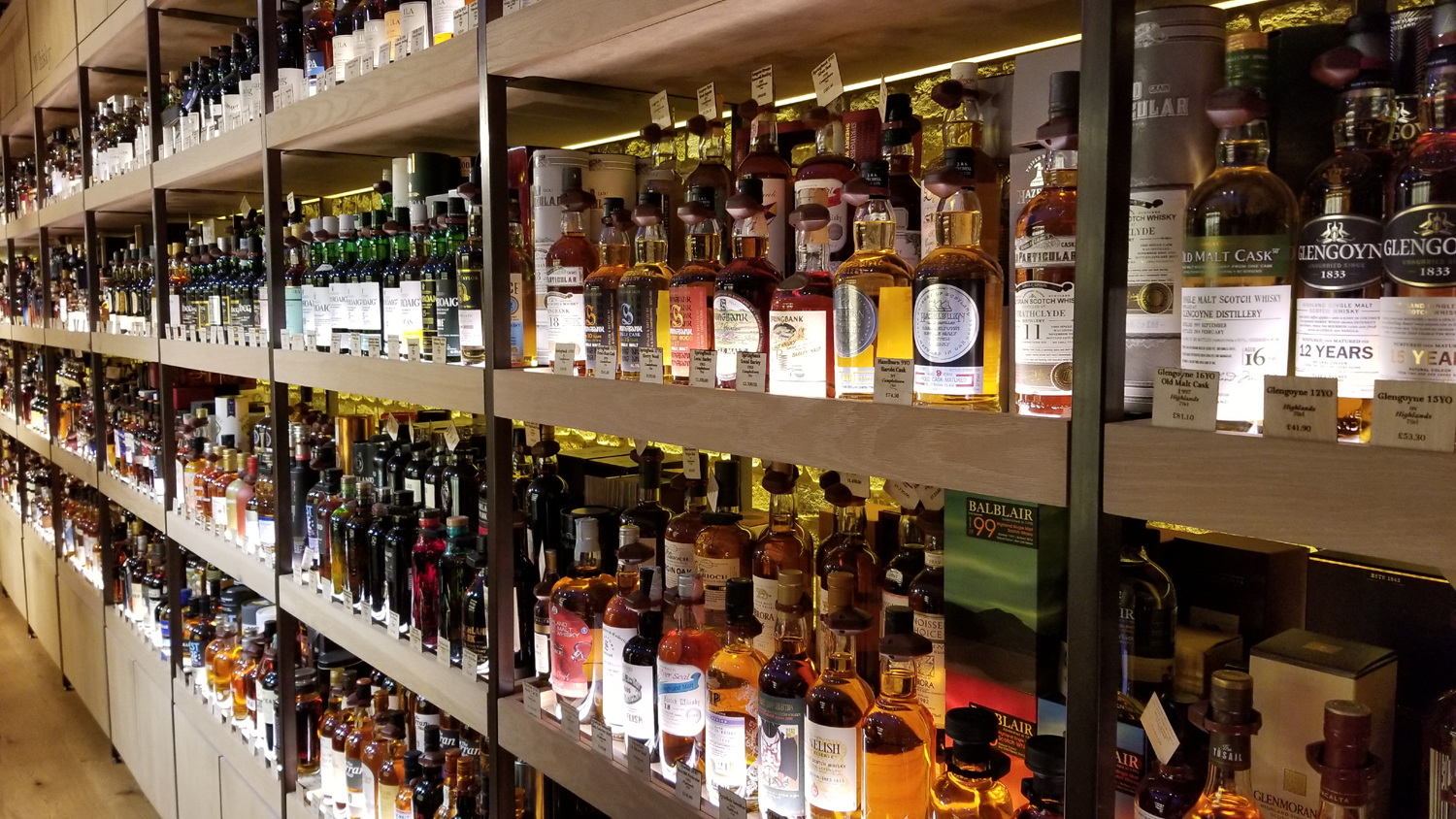Liquor firms raise a toast to safe recovery, Q1 may hint at good times ahead

Liquor firms raise a toast to safe recovery, Q1 may hint at good times ahead
Analysts are predicting improved EBITDA margins for alcohol makers in the April to June quarter compared to the previous quarter. During the January to March quarter, alcohol manufacturers faced challenges due to high raw material costs, which negatively impacted their margins. However, analysts believe that the situation may improve in the current quarter.
Karan Taurani, Senior Vice-President at Elara Capital, suggests that companies like United Spirits and Radico Khaitan could see some respite in their EBITDA margins in Q1FY24. He expects these companies to experience a quarter-on-quarter increase of 400 basis points, bringing the EBITDA margins to 20.5 percent for the April to June quarter.

This improvement in margins indicates a potential easing of the cost pressures faced by alcohol makers in the earlier quarter. Factors such as stabilization in raw material costs or better pricing dynamics may contribute to the anticipated margin recovery.
It’s important to note that these are analyst predictions and actual results may vary. The performance of alcohol makers in the April to June quarter will depend on various factors, including input costs, pricing strategies, demand trends, and overall market conditions.

Despite the expected high costs of Extra Neutral Alcohol (ENA), which is a key raw material for spirits, spirit companies have taken measures to address the situation. One approach they have taken is increasing the prices of their alcohol brands to counterbalance the rising ENA costs.
According to Radovan Sikorsky, the Chief Financial Officer at United Spirits, price increases have been implemented across multiple states, and the company remains committed to revenue management activities. This indicates their efforts to optimize pricing strategies and maintain profitability despite cost pressures.

Similarly, Radico Khaitan has also raised prices for its products in various states, including Uttar Pradesh, Rajasthan, Telangana, and Karnataka. Abhishek Khaitan, the Managing Director at Radico Khaitan, mentioned in an earnings conference call that with these price increases and a favorable product mix, they expect to mitigate margin headwinds in the Indian Made Foreign Liquor (IMFL) business to a significant extent.
By implementing price increases and leveraging product mix optimization, these spirit companies aim to mitigate the impact of higher raw material costs, particularly the cost of ENA. This strategy allows them to maintain reasonable margins and sustain profitability, even in the face of cost pressures.

However, it’s important to note that the effectiveness of these pricing strategies and their impact on margins will depend on various factors, including market demand, consumer response to price increases, and competitive dynamics within the industry.
According to median estimates from Bloomberg, United Spirits is expected to generate revenue of approximately Rs 2,195 crore in Q1FY24, with a net profit of around Rs 233 crore. The stock is currently trading at a one-year forward PE (Price to Earnings) ratio of 59.33. This ratio reflects the market’s valuation of the company’s stock relative to its expected earnings.
For United Breweries, revenue for Q1FY24 is estimated to be around Rs 1,769 crore. The stock of United Breweries is trading at a one-year forward PE ratio of 69.26.
In the previous quarter (January to March), spirit companies faced margin pressure due to the increased prices of Extra Neutral Alcohol (ENA) and glass bottles. ENA, a crucial ingredient in alcoholic beverages, is produced from sugarcane. The cost of sugarcane has risen by approximately 3.5 percent in 2023-24 compared to the previous year, reaching Rs 315 per quintal, as reported by the Press Information Bureau. This surge in sugarcane prices has directly contributed to the higher production costs of ENA.
The escalating raw material costs have impacted the profit margins of spirit companies, leading them to implement strategies such as price increases to mitigate the adverse effects on their profitability.
It’s worth noting that the stock’s PE ratio reflects the market’s perception of the company’s future earnings potential and growth prospects. A higher PE ratio suggests that investors are willing to pay a premium for the stock, anticipating strong future earnings growth. However, it’s essential to consider other factors and conduct thorough analysis before making investment decisions.
The rising prices of Extra Neutral Alcohol (ENA) in the alcohol industry are influenced by multiple factors. One significant factor is the government’s new ethanol blending policy, which aims to increase the target for blending ethanol with petrol to 20 percent by 2025, up from the previous target of 10 percent. As a result, a larger quantity of ethanol is now allocated to Oil Marketing Companies (OMCs) for blending, reducing the supply available to spirit companies. This shift in allocation has created a demand-supply imbalance, contributing to the increase in ENA prices.
Another contributing factor to the rising costs in the alcohol industry is the high prices of glass bottles. Hindustan National Glass, a major producer and supplier of glass bottles extensively used by alcohol manufacturers, faced insolvency proceedings initiated by DBS Bank in October 2021. This situation has caused disruptions in the supply of glass bottles, leading to a surge in their prices. These higher glass costs have impacted the profit margins of companies operating within the alcohol industry.
However, analysts anticipate that the prices of glass bottles will start to ease from the second quarter of FY24. This suggests that the supply disruptions and resulting high prices are expected to improve, providing some relief to the profit margins of alcohol manufacturers.
It’s important for companies in the alcohol industry to closely monitor the dynamics of ENA prices and glass bottle costs, as these factors significantly influence their production costs and profitability.
To mitigate the impact of rising glass prices, alcohol companies are adopting a strategy of gradually phasing out the use of mono cartons. This adjustment aims to compensate for the escalating costs of glass bottles. While the savings from cutting expenses on mono cartons may not be significant, it helps in reducing overall spending and managing costs.
United Breweries, a prominent beer company, is expected to face margin pressures in the April to June quarter due to high barley costs. Radovan Sikorsky mentioned in an earnings conference call that the margin pressure in Q1FY24 will persist, but the company anticipates some benefits to flow through in Q2FY24 as they start incorporating the new barley crops into production.
Barley is a key ingredient in beer production, providing enzymes, fermentable sugars, flavor contributions, and foam stability. The price of barley has been high due to supply issues caused by the ongoing conflict in Ukraine, one of the major producers of the crop.
United Breweries typically purchases barley crops between February and March for the rest of the year, as mentioned in a Motilal Oswal report. Alok Shah explains that the company is currently using the high-priced barley crop that was purchased earlier, leading to margin impacts in Q1FY24 due to the high raw material costs. However, he expects margins for United Breweries to start recovering from Q2FY24 when the company starts using the new barley crop, which is of good quality and lower priced.
The shift to the new barley crop with improved pricing is anticipated to positively influence United Breweries’ margins and alleviate some of the raw material cost pressures starting from the second quarter of the financial year 2024.




